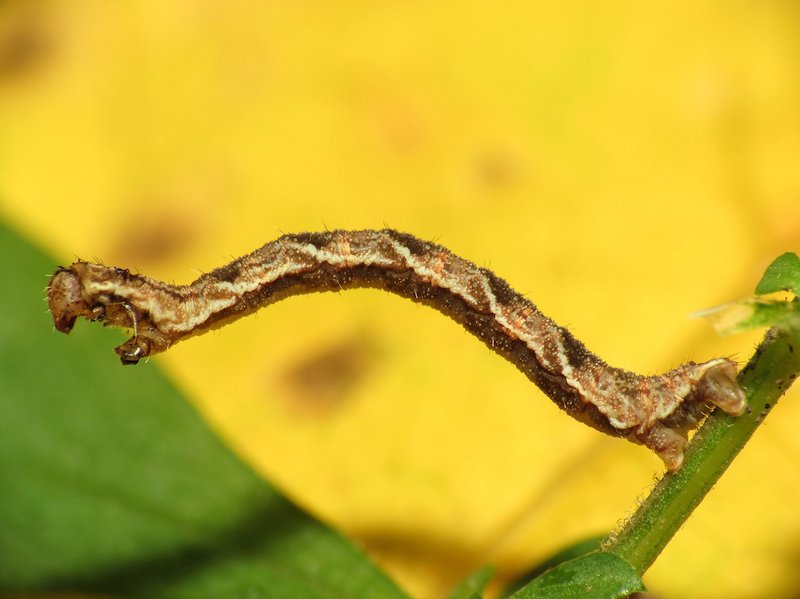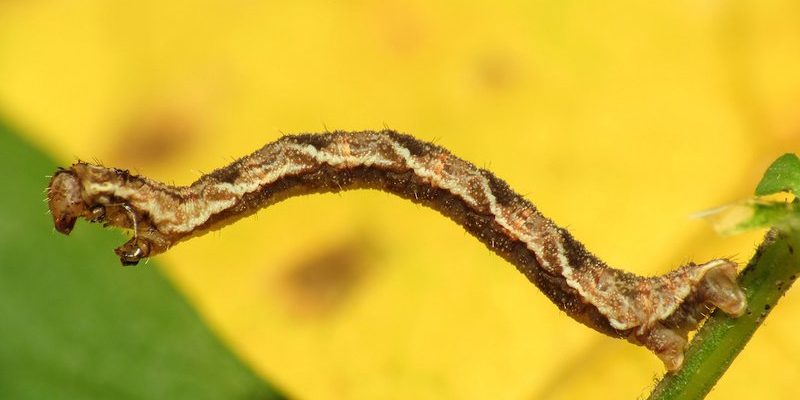
Inchworms themselves can be tricky little things. They’re the larvae of moths and have a unique way of moving that looks like they’re “measuring” the distance they travel. You might not think they’d have many enemies, but in reality, they’re part of a larger food web where many creatures rely on them for sustenance. Let’s dive into the world of inchworm predators, exploring how these relationships shape the forest ecosystem and why they matter.
Birds: The Feathered Hunters
Birds are among the most well-known predators of inchworms. These agile hunters take advantage of their keen eyesight and quick reflexes to spot inchworms clinging to leaves. Some common birds, like woodpeckers, warblers, and chickadees, make a significant dent in inchworm populations during their feeding frenzy in the spring.
Woodpeckers, for example, not only search for insects beneath the bark but also peck away at branches and trunks, sometimes uncovering inchworm hiding spots. It’s fascinating to think of a woodpecker tapping away, its sharp beak acting almost like a tool to dig out these sneaky caterpillars. Similarly, smaller birds like warblers can dart among branches, snatching inchworms with incredible precision.
This bird-insect dynamic is essential. When birds feast on inchworms, it helps control their numbers, which in turn protects trees from defoliation. Imagine a tree stripped bare of leaves—without birds keeping inchworm populations in check, that could become a reality.
Small Mammals: Nighttime Foragers
Now, let’s shift our focus to a different group of inchworm predators: small mammals. Animals like mice and shrews play a significant role in managing inchworm populations, especially during their nocturnal foraging trips. While you may not spot them easily, these critters are busy scouring the forest floor and lower branches for their next meal.
A mouse, with its sensitive whiskers and sharp senses, can detect inchworms even in the dim light of dusk. Shrews, on the other hand, are quick and agile, often catching inchworms right off the leaves. They rely heavily on these little creatures during the spring and summer months when inchworms are plentiful, providing a critical protein source that supports their growth and energy needs.
This predator-prey relationship creates a balanced ecosystem. Without small mammals munching on inchworms, we might see an explosion of inchworm populations, which could lead to over-consumption of leaves and damage to plant life. Nature’s checks and balances are truly remarkable.
Reptiles: Silent Stalkers
Reptiles, such as lizards and snakes, also join the ranks of inchworm hunters in forest ecosystems. These cold-blooded animals are excellent at blending into their surroundings, making them stealthy predators. A lizard basking on a rock is often waiting patiently for the chance to nab an inchworm that wanders too close.
For instance, many gecko species are known to feast on small caterpillars like inchworms. Their quick reflexes and sticky tongues make them adept at catching these slow-moving targets. In the case of snakes, while they often prefer larger prey, smaller species or young snakes may take advantage of any inchworms they come across as they search for food.
This predation adds another layer to the food web: when lizards and snakes feed on inchworms, they contribute to the overall health of the plant community. By helping to regulate inchworm numbers, they indirectly support the trees and vegetation that provide shelter and habitat for countless species.
Insects: Nature’s Tiny Assassins
In the world of insects, many species have developed a taste for inchworms. This group includes predatory wasps and beetles that are particularly important in keeping inchworm populations in check. It’s amazing how even the tiniest creatures can have a significant impact on the forest ecosystem!
Parasitic wasps are an excellent example. They lay their eggs inside inchworms, and when the eggs hatch, the larvae consume the inchworm from the inside out. It may sound brutal, but this method of control keeps inchworm numbers manageable. These wasps are like the secret agents of the forest, performing a vital function that most people don’t even notice.
There are also predatory beetles that actively hunt and eat inchworms. These resilient little warriors patrol the branches and leaves, on the lookout for an unsuspecting inchworm to devour. Insects often have a bad rap, but they are essential players in the predator-prey game, helping to maintain a healthy ecosystem.
Fungi and Parasites: The Silent Killers
In addition to animals, inchworms face threats from diseases caused by fungi and parasites. Some specific fungi infect inchworms, taking advantage of their vulnerable state. Once infected, the inchworms may exhibit sluggish behavior before ultimately succumbing to the disease.
Many inchworm control methods come from natural fungi that act as biological control agents. These fungi can spread quickly among inchworm populations, effectively keeping their numbers down without the need for chemical pesticides. It’s a natural form of pest management, harnessing the power of nature to achieve balance.
Here’s the thing: by controlling inchworm populations through these natural methods, we help to preserve the biodiversity of the forest. Healthy inchworm numbers support a variety of predators, contributing to the entire food web. Without these fungi and parasites, we could see unchecked growth and additional stress on forest ecosystems.
The Importance of Predator-Prey Relationships
Understanding the natural predators of inchworms is critical for appreciating how forest ecosystems function. Each predator, from birds to mammals, and even fungi, plays a unique role in maintaining balance. This relationship is a vivid reminder of how interconnected all life is.
The health of a forest isn’t just about the trees, but the intricate web of interactions among species. When we realize that all these components depend on each other, we gain a deeper respect for ecosystems. By protecting these predators, we ensure that the forests can thrive, and in turn, that they continue to provide homes for countless plants and animals.
In the grand scheme of things, inchworms may seem small and insignificant, but they are vital players in the forest ecosystem. Their natural predators work tirelessly, creating a balance that keeps everything running smoothly. From birds and small mammals to reptiles and even tiny fungi, each predator contributes to a larger story of survival and cohabitation.
So, next time you’re in a forest, take a moment to appreciate the hidden dynamics at play. It’s a fascinating world filled with drama, intrigue, and essential relationships that help maintain the delicate balance of nature. By understanding and respecting these connections, we can all play a part in preserving the health of our forests for generations to come.

